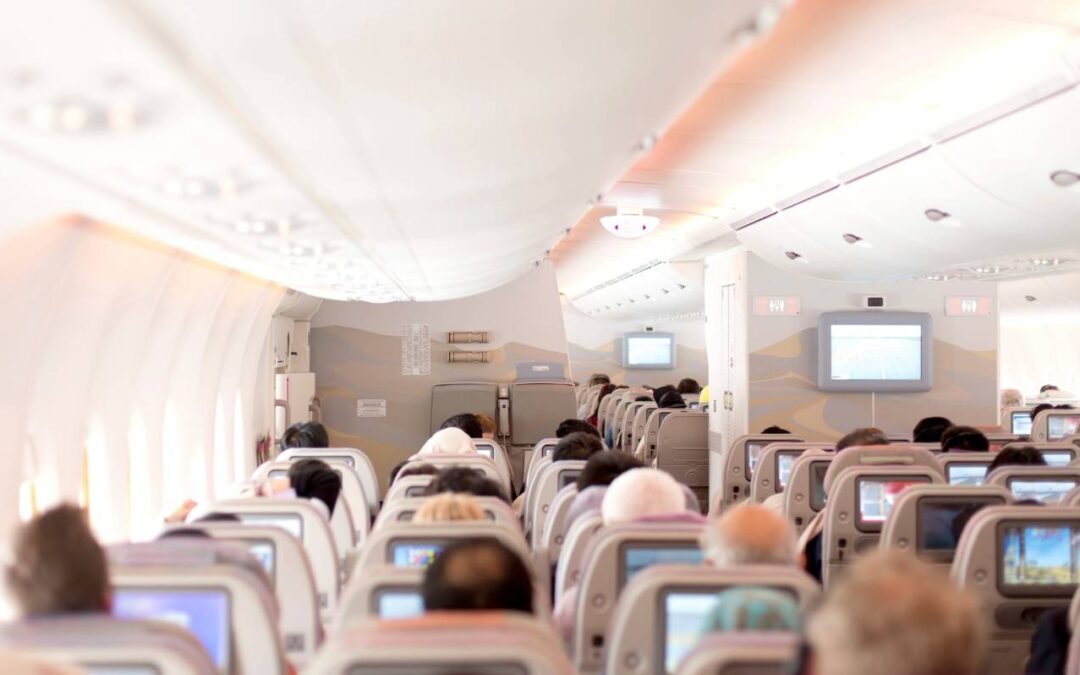With New Zealand’s border reopening and extra Kiwis beginning to plan these long-awaited abroad journeys, ultra-long-haul flights are again on our radar.
Final week, Air New Zealand announced its new route between Auckland and New York will take off in September. With the return leg from New York to Auckland taking 17 and a half hours, it is going to be amongst the longest flights in the world – up there with the 2 different marathon routes that depart New Zealand, Auckland to Dubai with Emirates (which, resulting from Covid-19, is at present working with a cease in Kuala Lumpur) and Auckland to Doha with Qatar Airways (at present working with a cease in Australia).
Istock
May you survive 17 and a half hours within the air?
After two years with out worldwide journey, the prospect of being cooped up in a steel tube for thus lengthy could be daunting for some.
“It was virtually like being on an airplane for the primary time,” stated Chris Lethbridge, the New Zealand supervisor for Emirates, who earlier this month made his first journey to Dubai in additional than two years.
READ MORE:
* Why are international flights so expensive – and when will they get cheaper?
* Transit in the time of Covid: Which layovers are the least stressful?
* What it’s like travelling on a long-haul flight right now
So, we’ve spoken to some consultants and put collectively a survival information for whenever you’re prepared on your prolonged stint within the air.
Pre-flight preparation
Unsurprisingly, your seat is the most important contributor to your in-flight consolation on an ultra-long-haul flight.
For those who’re lucky sufficient to be flying premium financial system, enterprise, and even top quality, then you definitely received’t want a lot assist on this division. However for the remainder of us within the low-cost seats, there are some things you are able to do to enhance the expertise.
It’s value finding out the seat map of the airplane to seek out your most popular spot – whether or not that be window or aisle, near the bogs for straightforward entry, or as removed from them as potential to keep away from being disturbed.
Some planes, like Emirates’ Boeing 777 plane, even have “twin seats” the place you’ll be able to decide to take a seat in a row of two.
123RF
Research the airplane map and decide your personal seat – you may pay additional for it, however it is going to be value it.
Ben Irwin, a Kiwi journalist who lived in Qatar for 3 years, has made the 17-and-a-half hour flight from Auckland to Doha 4 occasions. When reserving his financial system seat, he would at all times pay additional to have the ability to sit within the exit row.
“From reminiscence it’s often lower than $100 on high, but it surely makes a world of distinction with the ability to totally stretch out your legs when you might have one seat for three-quarters of a day,” he stated.
“You’re in financial system, however your legs are flying top quality.”
Air New Zealand’s Boeing 787-9 Dreamliner, which can function the Auckland to New York route, has financial system seats with a pitch of 78 to 83cm.
JARRED WILLIAMSON/Stuff
Air New Zealand will function the Auckland to New York route utilizing a Boeing 787-9 Dreamliner.
Whereas in the intervening time exit rows are blocked for crew social distancing, the airline stated often clients can choose exit row seats at no additional cost (though there’s a customary charge for pre-selecting a seat).
Irwin’s different high pre-flight tip was to ensure to have an honest feed on the airport earlier than takeoff – which, he admitted, in his case was often McDonald’s.
“That is an important step. In any other case, you face 18 hours of airline meals, which to be truthful has come a great distance lately, however isn’t significantly thrilling.”
Air New Zealand stated it could supply two meal providers on its Auckland to New York flights, in addition to “substantial scorching snacks” for many who needed them in the course of the evening.
In the course of the flight
Frequent flyer Lethbridge would usually be travelling for work, so is aware of maximising his alternative for relaxation onboard these Auckland to Dubai flights.
“I’m fairly targeted on the actual fact I’m going to hit the bottom operating.”
He’ll let himself watch a few films, earlier than attempting to get as a lot shut-eye as potential. In any other case, he adheres to the nice old school flying guidelines to make sure he arrives in good condition – staying hydrated, ensuring to face up and transfer round recurrently, and avoiding alcohol.
“On this specific journey I did shout myself one glass of celebratory champagne on departure after being on the bottom for thus a few years,” he confessed.
“However just one.”
Leigh Sign, a professor of fatigue administration and sleep well being at Massey College’s Sleep/Wake Analysis Centre, is an skilled in ultra-long-haul flights. She educated as a business pilot, however her analysis has additionally seen her within the passenger seat loads of occasions – her longest stint was a 19-hour take a look at flight with Singapore Airways.
Sign stated travellers ought to settle for {that a} airplane isn’t going to be the very best place on the planet to get sleep – it doesn’t matter what class you’re in – and shouldn’t put an excessive amount of stress on themselves to be preventing match on the finish of the journey.
“You’ll miss out on sleep – that’s a no brainer,” she stated.
However she does have a couple of ideas for feeling as human as potential. First, you need to be sure to’re not sleep-deprived earlier than you’ve even boarded the airplane.
When you’re on the plane, you need to attempt to get your sleep throughout your regular nighttime. The flight from Auckland to New York will depart at 7.40pm, which provides you time to have a meal and watch a film earlier than winding down.
Sign stated utilizing earplugs and eyemasks will certainly enhance your high quality of sleep, by blocking out the airplane noises and display screen gentle from neighbouring passengers.
However when you’re not used to carrying them, she really useful sleeping with them on for a couple of nights at dwelling earlier than you depart, “in order that they don’t really feel fully bizarre”.
123RF
Get used to your eyemask and earplugs earlier than you fly.
Neck pillows can even aid you with a greater sleeping place: “After we sleep, our muscular tissues chill out, and it’s actually tough to remain upright. That’s why you get up with that horrible crick in your neck, as a result of your head’s fallen over.”
For those who do get up after simply a few hours, attempt to withstand the urge to modify the flicks again on. “Do one thing quiet like listening to music or a podcast, reasonably than turning on the in-flight leisure system and shining a brilliant gentle at your eyes, which is actually alerting.”
The opposite main wellbeing consideration in the course of the flight is the longer the time spent onboard, the higher the danger of deep vein thrombosis (DVT) – a blood clot that kinds in a vein deep contained in the physique, often the leg. This may be attributable to lengthy intervals of sitting, which is why it’s generally related to air journey.
Journey medication practitioner Jenny Visser, who is predicated on the College of Otago, stated some can be extra in danger than others – equivalent to those that have energetic most cancers, diabetes, kidney illness, or are pregnant – in addition to passengers who’re both very obese, very tall, or very quick.
“Tall individuals’s knees are kinked up, blocking the little vessels behind their knee, whereas for brief individuals, the seat could be placing stress on the again of their knee.”
Except already on blood-thinning medicine, these higher-risk passengers ought to focus on choices with their GP forward of an ultra-long-haul flight. However for most individuals, ensuring to recurrently rise up and transfer round, or doing a little light workout routines of their seats, will probably be worthwhile, Visser stated.
Staying nicely hydrated can be useful, as there may be some proof dehydration could make the blood thicker. “If nothing else it means you rise up and go to the bathroom and get in some motion.”
Prior to now, below-knee compression socks have been usually really useful for long-haul travellers as a solution to scale back the danger of DVT, although it’s unclear how efficient they really are, Visser stated.
For those who’re going to put on them, you could be sure they match correctly – test with a pharmacist or physician.
“You don’t need them so tight across the knees they do extra hurt than good. One dimension doesn’t match all, and you could be sure to’re snug.”
Masking up
You may discover there may be one accent that may be a non-negotiable in your subsequent ultra-long-haul flight.
Whereas some airlines are now removing the requirement to wear a face mask onboard, College of Auckland aerosol chemist Joel Rindelaub nonetheless extremely recommends carrying one even when they weren’t obligatory, so long as Covid-19 is round.
iSTOCK
An N95 or P2 masks with a head strap can be a greater choice than the surgical masks pictured.
“We all know there have been many situations the place aerosol transmission has occurred on these flights,” he stated.
“One thing that’s 17 hours… that’s a very long time for potential publicity, so carrying a masks could possibly be a key factor you are able to do to assist maintain your self secure.”
Rindelaub stated you’ll need a top quality masks, both an N95 or P2. He really useful choosing a make that has straps across the head as a substitute of ear loops – in addition to being a greater match, it is going to be extra snug. And you need to be sure to have no less than one change of masks at some point of the flight.
After all, you’ll have to take your masks off to eat and drink, and that is whenever you’ll be at most danger of catching Covid-19. Rindelaub stated you need to attempt to time your masks elimination so not everybody has them off without delay. “Anticipate the individuals round you to complete earlier than you dig into your feast.”
You also needs to maintain your masks on when going to the bathroom, he stated. “Much like how we’ve seen transmission happen in elevators, as a result of it’s such a confined area, it could positively be a very good concept to put on your masks within the airport toilet.”



Recent Comments